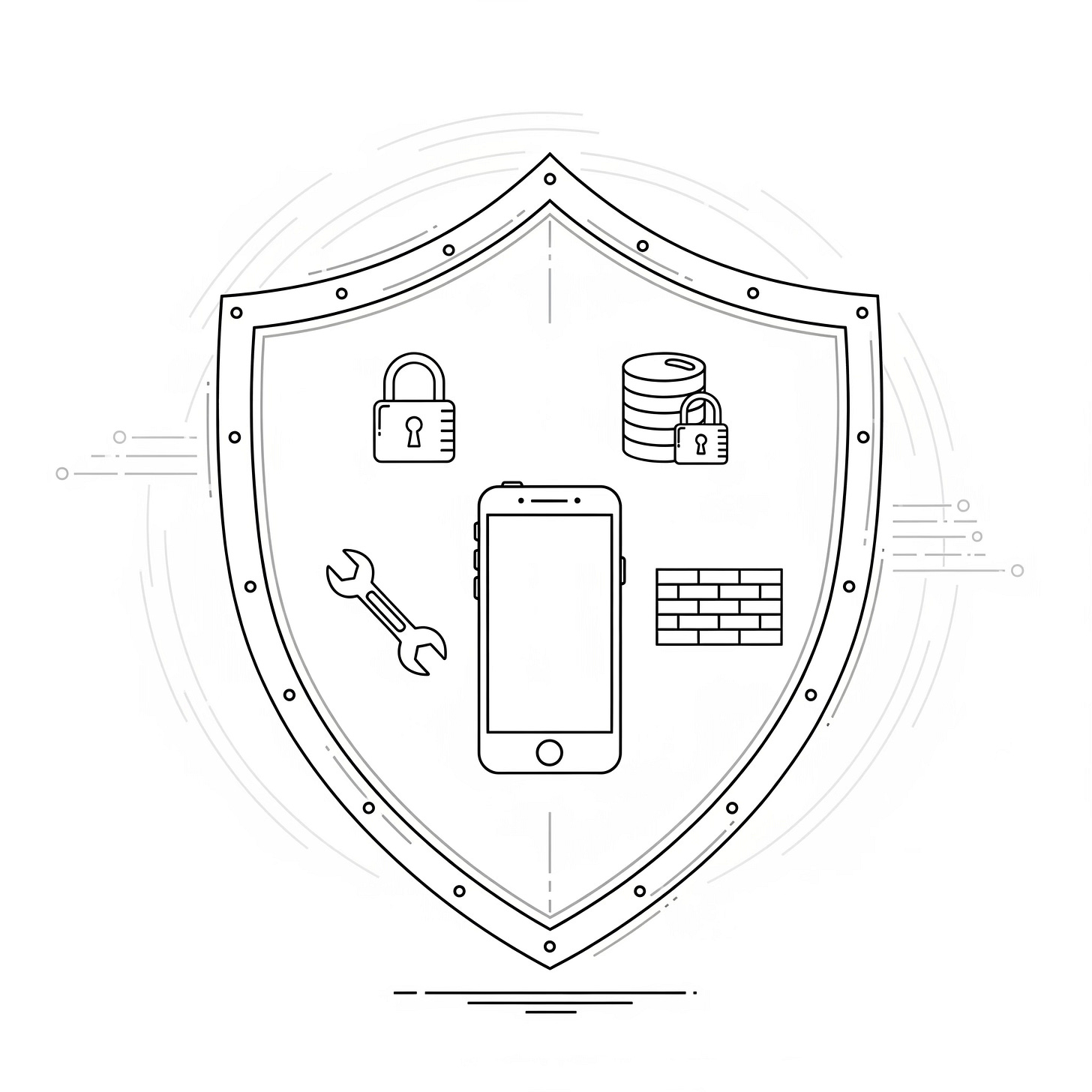Ensuring the Security of Your Mobile Application
Your App's Digital Armor: A Developer's Guide to Building Secure Mobile Applications
In the digital world, a mobile application is not just a tool—it's a gateway to sensitive user data, intellectual property, and business operations. As a developer, ensuring the security of your mobile application is a non-negotiable responsibility. A security breach can lead to severe consequences, including data theft, financial loss, reputational damage, and a complete erosion of user trust. While a perfect, unbreachable app is an impossible goal, a proactive approach to security can mitigate most risks and protect your users from common threats.
Many developers, especially those focused on rapid development, make the mistake of treating security as an afterthought. This oversight can leave an app with critical vulnerabilities that can be easily exploited by malicious actors. For any developer or business owner, building security into the entire application lifecycle—from design and development to testing and deployment—is the only way to build a robust and trustworthy product. This guide will walk you through the essential best practices and a "how-to" framework for ensuring your mobile application is built with security as a core principle.
Why Mobile App Security is Your Top Priority 🤔
Prioritizing mobile app security is crucial because it:
Protects User Data: It safeguards sensitive information, such as personal details, financial data, and login credentials, from theft.
Builds User Trust: Users are more likely to use and recommend an app they perceive as safe and secure.
Prevents Financial Loss: A breach can lead to massive financial penalties, legal costs, and a loss of business.
Preserves Brand Reputation: A security incident can cause irreparable damage to your brand's reputation and lead to a loss of customer loyalty.
Maintains Regulatory Compliance: Many industries have strict regulations (e.g., GDPR, HIPAA) that require a high level of data protection.
Essential Best Practices for Mobile App Security 🔒
I. Secure Data Storage 💾
Best Practice: Don't store sensitive data directly on the user's device. If you must, use secure, encrypted storage.
How-To:
Avoid Plaintext: Never store passwords, API keys, or other sensitive information in plain text within your app's code or on the device.
Use a Secure Keystore: For Android, use the Android Keystore System. For iOS, use the KeyChain to securely store cryptographic keys and sensitive data.
Encrypt Data in Transit: All data sent between your app and a server should be encrypted using HTTPS(SSL/TLS). This prevents "man-in-the-middle" attacks.
II. API and Server-Side Security ☁️
Best Practice: The communication between your app and its backend servers is a primary point of vulnerability.
How-To:
Validate and Sanitize All Inputs: Treat all data coming from the mobile app as untrusted. Validate and sanitize every user input on the server side to prevent injection attacks (e.g., SQL injection).
Use API Keys and Tokens: Don't rely on just user credentials. Use unique API keys and tokens for each user to authenticate requests and secure API endpoints.
Implement Rate Limiting: This prevents brute-force attacks by limiting the number of API calls a user can make in a given timeframe.
III. Code Obfuscation and Tamper Detection 🕵️♂️
Best Practice: Make it difficult for a hacker to understand and modify your app's code.
How-To:
Use Code Obfuscation: Obfuscation tools rename variables, classes, and methods to make your code harder for a human to read and understand.
Implement Tamper Detection: Add code that detects if your app has been modified or run on a rooted/jailbroken device. You can then trigger an alert or shut down the app.
Disable Debugging: Ensure that your production build has debugging and logging disabled, as this information can be a goldmine for an attacker.
IV. User Authentication and Authorization 🔐
Best Practice: Implement robust authentication and authorization protocols to ensure only legitimate users can access your app.
How-To:
Use Strong Password Policies: Enforce a minimum length, use of special characters, and avoid common or easily guessable passwords.
Implement Multi-Factor Authentication (MFA): Offer or require MFA for an extra layer of security.
Use Session Management: Securely manage user sessions and tokens, and be sure to revoke them upon logout or after a certain period of inactivity.
V. Regular Security Testing and Audits 📊
Best Practice: Security is an ongoing process. You must regularly test your app for vulnerabilities.
How-To:
Use Static and Dynamic Analysis: Use automated tools to scan your code for vulnerabilities (Static Analysis) and test your app while it's running (Dynamic Analysis).
Conduct Penetration Testing: Hire a professional security firm to simulate a real-world attack on your app to find its weaknesses.
Monitor for Updates: Stay informed about new security vulnerabilities for the libraries and frameworks you're using.
By building a security-first mindset into your development process, you can create a mobile application that not only delights users with its features but also earns their trust by protecting their data. A secure app is a successful app.
Are you confident in your mobile app's security? Visit FunctioningMedia.com for expert mobile application development and security auditing services that build trust and protect your brand from digital threats. Let's build your app with security from the ground up.
#MobileSecurity #AppDevelopment #Cybersecurity #ApplicationBuilding #BestPractices #DataProtection #SecureCoding #AppBuilding #TechTips #FunctioningMedia





